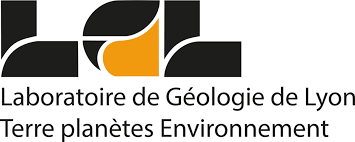
16h30-18h
We have developed a 3-D model of the Mount St Helens (MSH) magmatic plumbing system extending from the upper magma storage zone (> 3.5 km bsl) to Moho depths (40-45 km) by combining results from 2D and 3D active source seismic tomography, reflection imaging, and autocorrelation reflectivity imaging. The data are from the ~6000 high frequency seismograph stations of the 2014 iMUSH active seismic experiment.
3D Vp tomography was used previously (Kiser et al, 2018) to construct a model of melt distribution in the upper-middle crust. The model suggests the plumbing system is a composite sill structure of complex morphology beneath MSH that is 3.5 to 14 km deep and ~25 km in lateral dimension, and consists of several distinct and interconnected bodies. Bright reflections in the 3D depth migrations of autocorrelation reflectivity are strongly correlated with the melt model, illuminating its interior structure and a system of more geographically extensive sills with dimensions below tomographic resolution. The highest amplitude reflectivity occurs near the top of the composite sill structures, suggesting that successive emplacement at the top of the sill complex results in system growth.
Inversion of the autocorrelation reflection image volume for melt concentration (i.e., porosity) suggests melt concentrations exceed 30% in some of the sills in the upper crustal complex. The center of the structure, which is highly reflective, is likely the magma storage zone that feeds dacitic composition MSH eruptions. We speculate that some of the more geographically extensive dikes help feed the Indian Heaven basalt fields.
Deeper in the crust we observe complex reflectivity in the zone identified as the Lower Crustal Conductor in the MT interpretation of Bedrosian et al, (2018). They interpret the high conductivity values as indicative of 3-10% interconnected melt in the crust at depths > 20 km. We also observe asymmetric crustal thickening toward and thinning away from MSH along strike of the Cascades. Directly beneath MSH Moho reflectivity is weak, agreeing with previous studies (Kiser et al, 2016; Hansen et al, 2016). In a number of places east of MSH, zones of strong autocorrelation and wide-angle reflectivity cross the refraction Moho and extend some distance into the upper mantle. Several possible pathways connecting the deeper and shallower parts of the system are suggested by clusters of locally high reflection amplitudes.
